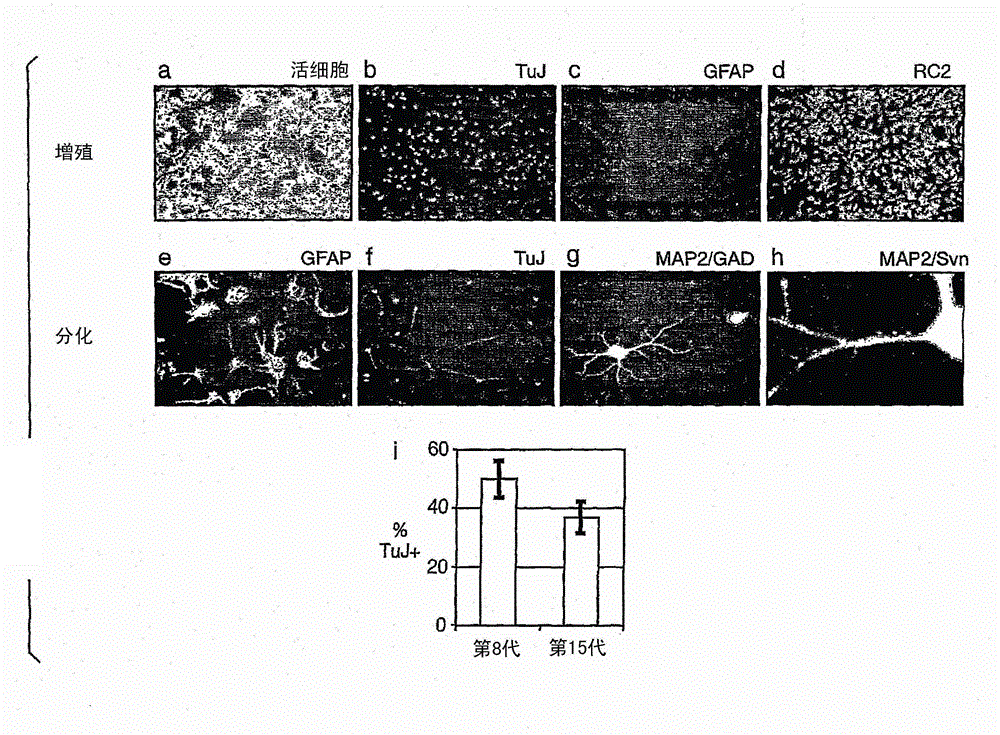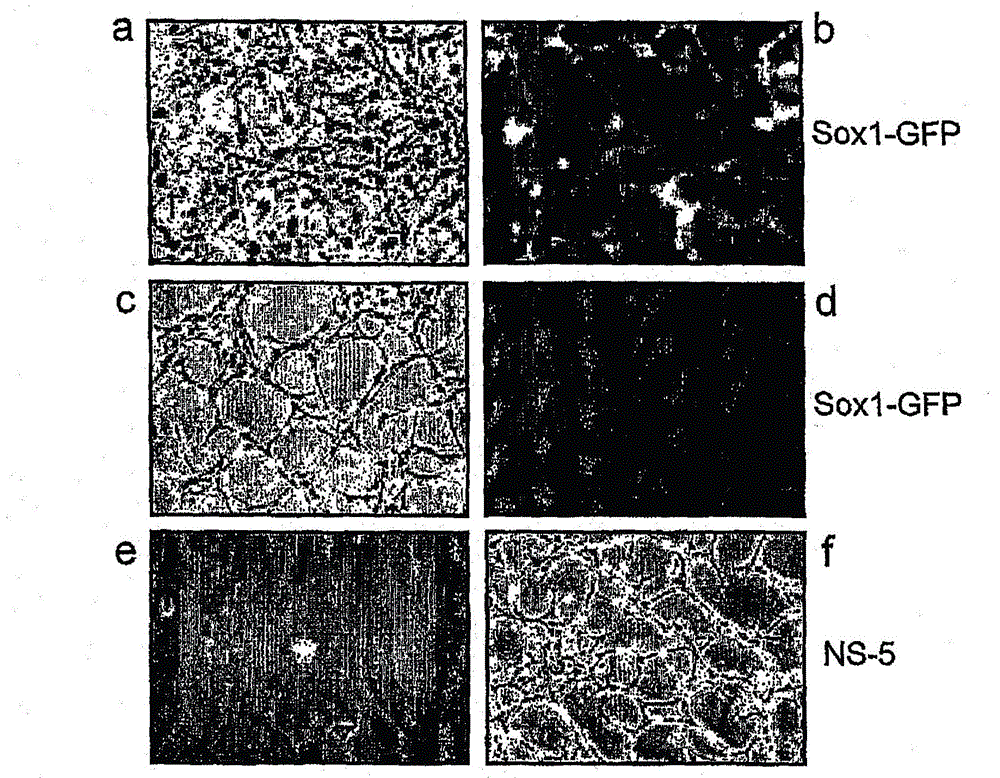Neural stem cells
A neural stem cell, stem cell technology, applied in the field of neural stem cells
- Summary
- Abstract
- Description
- Claims
- Application Information
AI Technical Summary
Problems solved by technology
Method used
Image
Examples
Embodiment 1-1
[0199] Isolation and culture of large populations of NS cells
[0200] ES cell differentiation protocols have been established in recent years to efficiently and consistently generate 50-70% Sox1-positive neural progenitor cells in adherent monolayer cultures. To isolate, expand and characterize neural precursor cells (derived from mice) in these cultures, a previously generated cell line (46C cells) containing a GFP-IRES-puromycin reporter cassette targeting the Sox1 locus was employed (Ying et al., 2003b). Puromycin was added to the differentiation culture after 7 days, and within 3 days, more than 95% of the remaining cells were GFP+ neural precursor cells. At this point, cells were re-plated in N2B27 medium supplemented with EGF / FGF-2 (without puromycin). These cells grow rapidly and assume a uniform morphology within several generations.
[0201] These 46C neural progenitor cells (46C-NP) maintained the characteristic bipolar morphology in continuous culture for more t...
Embodiment 1-2
[0203] Culture of Cell Lines
[0204] To isolate clonal cell lines, single cells from a large culture of passage 5 46C-NP cells were seeded in individual wells of a microplate. Of the 95 individual cells, 15 grew into colonies, and among these cells, 4 cell lines maintained continuous growth for more than 10 passages. One cell line (NP5) displayed characteristic bipolar cells with a homogeneous morphology as observed in the bulk population. This NP5 cell line can be maintained in culture indefinitely (NP541 passage; more than 5 months).
Embodiment 1-3
[0206] Characterization of NS cells
[0207] To characterize large populations and clonal cell lines, a panel of markers is assayed by immunocytochemistry. As expected, each cell line was found to be positive for the neural precursor cell markers stem protein or vimentin. Importantly, these cells were also positive for the radial glial cell-specific markers RC2, 3CB2, and astrocytic-specific glutamate transporter (GLAST). Less than 1% of cells were positive for GFAP or βIII-tubulin, suggesting that astrocytes or neurons rarely differentiated simultaneously during passage of these cells. Unlike primate / human cells, rodent radial glia are negative for GFAP. Furthermore, these cells were immunoreactive to the antibody SSEA-1 (previously used to enrich adult animal neural stem cells) recognizing the LewisX antigen.
[0208] RT-PCR was performed with a panel of markers to confirm their identity as radial glia. All four clonal cell lines, as well as a large population, were nega...
PUM
 Login to View More
Login to View More Abstract
Description
Claims
Application Information
 Login to View More
Login to View More - R&D
- Intellectual Property
- Life Sciences
- Materials
- Tech Scout
- Unparalleled Data Quality
- Higher Quality Content
- 60% Fewer Hallucinations
Browse by: Latest US Patents, China's latest patents, Technical Efficacy Thesaurus, Application Domain, Technology Topic, Popular Technical Reports.
© 2025 PatSnap. All rights reserved.Legal|Privacy policy|Modern Slavery Act Transparency Statement|Sitemap|About US| Contact US: help@patsnap.com



